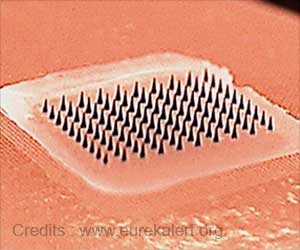
‘Novel potential therapy optimizes lead compounds to produce JNJ-4796, a most promising inhibitor which is proven to be effective against influenza A viruses. ’
Read More..Tweet it Now
In a typical year, influenza sickens 5 to 20 percent of the U.S. population, leading to more than 200,000 hospitalizations and 36,000 deaths, according to the Centers for Disease Control and Prevention. Strains of influenza A virus are categorized into group 1 and group 2, and then into further subtypes. Antibodies against the virus often only recognize a handful of similar strains. However, a decade ago, Wilson was part of a team of researchers who described a "super- antibody" called CR6261 isolated from a healthy human that recognized a part of the virus called the hemagglutinin (HA) stem, which is present across influenza strains. Read More..
Since that time, researchers have been striving to use these super-antibodies, known as broadly neutralizing antibodies (bnAbs), to develop approaches which could lead to universal flu vaccines and treatments. However, antibodies themselves are large molecules that can only be given through injections, never as an oral drug, which makes them impractical for treating patients at home. A more practical drug, Wilson theorized, would consist of a small molecule that recognizes the HA stem in the same way as the antibody.
In 2017, collaborators designed an artificial peptide that bound to the same region of the HA stem as CR6261 using information on how other stem bnAbs, FI6v3, and CR9114, bind to and neutralize influenza virus. In the new work, published online in the journal Science, they’ve taken a different approach to mimic the antibody’s actions.
The researchers turned to a library of more than 500,000 drug-like molecules and, in a high-throughput experiment, tested whether any of the compounds could displace a small protein HB80.4 mimic of bnAb CR6261 from the influenza type 1 HA stem, suggesting that such molecules attached to the same spot on the virus. Multiple molecules turned up as positive on the screen, and optimization to produce better binding and pharmacokinetic properties resulted in JNJ-4796 being the most promising inhibitor. Structural work in the Wilson lab revealed the close mimicry of how JNJ4796 bound to the HA stem compared to bnAb CR6261.
The team went on to show that when mice were given JNJ-4796 for seven days, beginning one day before being infected with 25 times the normally-lethal dose of H1N1 influenza, 100 percent of the mice survived. Moreover, when JNJ-4796 was incubated with human bronchial epithelial cells airway cells affected by a flu infection the compound dramatically lowered levels of the virus present in the tissue 96 hours after infection.
Advertisement
In addition to pointing towards a potential strategy for the design of new drugs to treat influenza, the new work opens the door to designing other antiviral drugs using a similar antibody-inspired approach.
Advertisement
Kadam adds that HIV and Ebola for which neutralizing antibodies are known would be especially useful to study in the same way. While antibodies can cost thousands of dollars per dose, small molecules are cheaper, more shelf-stable, and can be developed into oral compounds that are more convenient for patients. Further research would be required.
Source-Eurekalert














